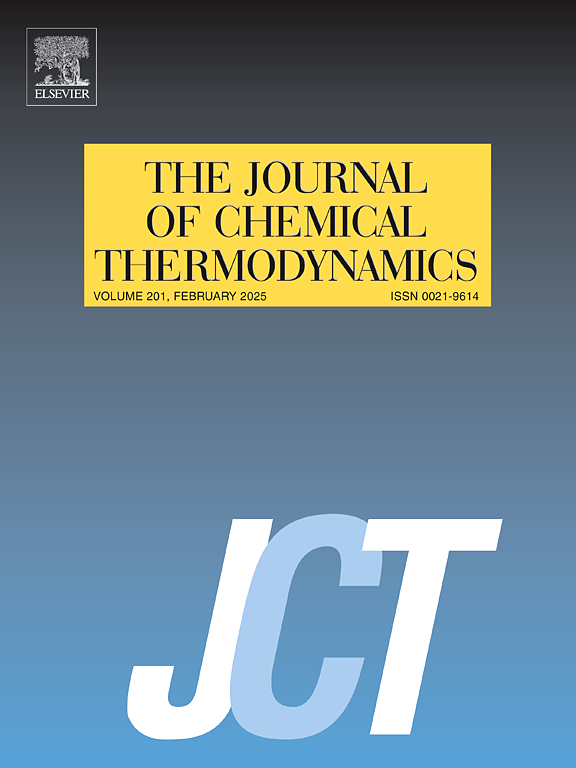Investigating ethyl laurate and 2-alkanol systems: Application of significant structure theory
IF 2.2
3区 工程技术
Q3 CHEMISTRY, PHYSICAL
引用次数: 0
Abstract
The study examines the liquid density and viscosity behavior of ethyl laurate (EL) mixed with different 2-alkanols (2-propanol, 2-butanol, 2-pentanol, and 2-hexanol) over the temperature range of 293.15 to 323.15 K, with the goal of clarifying the intermolecular interactions and deviations from ideality. Our experimental observations showed that all tested mixtures displayed positive excess molar volumes and negative viscosity deviations, implying that the forces between EL and each 2-alkanol are relatively weak. The significant structure theory was then utilized to represent the pure-component viscosities, yielding a maximum viscosity discrepancy of 1.691 % for 2-pentanol. For the binary systems, we introduced a new correlation whose calculated values aligned closely with the measurements, demonstrating a maximum variation of only 2.01 % for the EL + 2-hexanol mixture, which highlights the predictive capability of the proposed model. The performance of this model was compared to earlier models such as Nissan-Grunberg, Hind, Kendall-Monroe, Arrhenius, and other models. Our results demonstrate that the new model offers improved accuracy, albeit with more complex parameters.
研究月桂酸乙酯和 2-烷醇体系:重要结构理论的应用
在293.15 ~ 323.15 K的温度范围内,研究了月桂酸乙酯(EL)与不同的2-烷醇(2-丙醇、2-丁醇、2-戊醇和2-己醇)混合的液体密度和粘度行为,目的是澄清分子间相互作用和偏离理想的情况。我们的实验观察表明,所有被测试的混合物都显示出正的过量摩尔体积和负的粘度偏差,这意味着EL与每种2-烷醇之间的作用力相对较弱。然后利用显著结构理论来表示纯组分粘度,得到2-戊醇的最大粘度差异为1.691%。对于二元体系,我们引入了一个新的相关性,其计算值与测量值密切相关,表明EL + 2-己醇混合物的最大变化仅为2.01%,这突出了所提出模型的预测能力。将该模型的性能与nissangrunberg、Hind、Kendall-Monroe、Arrhenius等早期模型进行了比较。我们的结果表明,新模型提供了更高的精度,尽管更复杂的参数。
本文章由计算机程序翻译,如有差异,请以英文原文为准。
求助全文
约1分钟内获得全文
求助全文
来源期刊

Journal of Chemical Thermodynamics
工程技术-热力学
CiteScore
5.60
自引率
15.40%
发文量
199
审稿时长
79 days
期刊介绍:
The Journal of Chemical Thermodynamics exists primarily for dissemination of significant new knowledge in experimental equilibrium thermodynamics and transport properties of chemical systems. The defining attributes of The Journal are the quality and relevance of the papers published.
The Journal publishes work relating to gases, liquids, solids, polymers, mixtures, solutions and interfaces. Studies on systems with variability, such as biological or bio-based materials, gas hydrates, among others, will also be considered provided these are well characterized and reproducible where possible. Experimental methods should be described in sufficient detail to allow critical assessment of the accuracy claimed.
Authors are encouraged to provide physical or chemical interpretations of the results. Articles can contain modelling sections providing representations of data or molecular insights into the properties or transformations studied. Theoretical papers on chemical thermodynamics using molecular theory or modelling are also considered.
The Journal welcomes review articles in the field of chemical thermodynamics but prospective authors should first consult one of the Editors concerning the suitability of the proposed review.
Contributions of a routine nature or reporting on uncharacterised materials are not accepted.
 求助内容:
求助内容: 应助结果提醒方式:
应助结果提醒方式:


